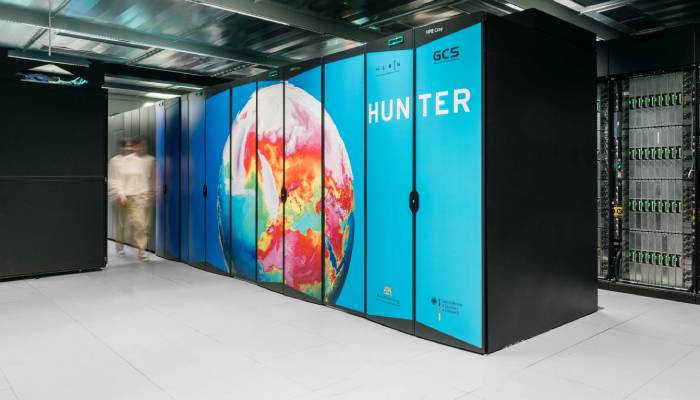Recently, the University of Stuttgart’s High Performance Computing Centre (HLRS) launched “Hunter”, a new 15 million Euros supercomputer powered by AMD technology. This system, built by HPE and utilising AMD Instinct MI300A APUs, represents a significant step forward for European HPC and artificial intelligence (AI) capabilities.
By leveraging the leadership performance and energy efficiency of AMD Instinct APUs, which integrate CPUs and GPUs on a single chip, Hunter will deliver a world-class infrastructure for large-scale simulation, artificial intelligence, and data analytics applications to tackle complex challenges in diverse areas such as engineering, weather and climate modelling, biomedical research, and materials science, among others.
This supercomputer joins other prominent European systems powered by AMD, including ENI and LUMI, highlighting AMD’s commitment to advancing scientific discovery and innovation across the region. Currently, AMD technologies power 50% of the top ten fastest and 40% of the ten most energy efficient supercomputers in the world, according to the Top500 list, including El Capitan and Frontier, ranked #1 and #2 on the list.
“We are pleased with the longstanding successful collaboration with HLRS and excited to power ‘Hunter’ as one of the most advanced supercomputers in Germany using AMD Instinct™ MI300A APUs. Together with the teams at HPE and HLRS, we are proud to be paving the way toward the Exascale era.” said Brad McCredie, Senior Corporate Vice President and General Manager of Data Center and Accelerated Processing at AMD.
The Hunter supercomputer marks Germany’s initial steps towards exascale performance. HLRS conceived Hunter as a transitional system that will enable system users to prepare for its upcoming exascale supercomputer, Herder, which is planned for 2027.


